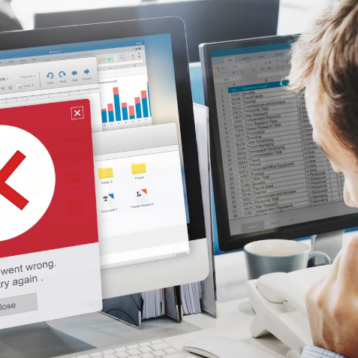If you’re running a business, you know that security is key. In this digital age, it’s more important than ever to make sure your confidential data is protected. One way to do that is by using digital keys and certificates. But managing these can be tricky – especially if you’re not familiar with the process. We’ve put together this blog post, which will give you five ways to manage the lifecycle digital certificates and keys for your business!
Understand The Different Types Of Digital Keys And Certificates
In the context of digital security, a key is a piece of data used to encrypt or decrypt information. A certificate is a digital document that verifies the identity of an individual or organization. Understanding the different types of keys and certificates is essential for managing them effectively.
There are two main types of keys: private keys and public keys. Private keys are kept secret and are used to decrypt information that has been encrypted with the corresponding public key. On the other hand, public keys are made available to anyone who needs to encrypt data. To be effective, digital certificates must be carefully managed. Otherwise, they can be stolen or forged, leading to security breaches.
Digital certificates are typically issued by a certification authority, an organization that verifies the identity of individuals and organizations. In order to obtain a digital certificate, an individual or organization must first prove their identity to the certification authority. Once a digital certificate has been issued, it can be used to encrypt the information or to sign digital documents. These signatures can then be verified by anyone who has the corresponding public key.
Digital keys and certificates play a vital role in keeping information secure. By understanding the different keys and certificates, individuals and organizations can better protect their data.
Using passkey authentication is a safer way to protect yourself online compared to using passwords. It uses a more complex system to verify your identity, making it harder for hackers to break in. Plus, it’s easy to set up and use.
It’s worth noting that verifiable credentials provide a secure way to authenticate identities and access using passkeys and digital keys, ensuring the information can be trusted and verified.
Know Where To Store Your Keys And Certificates
Once you understand the different digital keys and certificates, you need to know where to store them. Private keys should always be kept confidential and stored in a secure location. Public keys can be stored in a publicly accessible location, such as a website. Digital certificates must also be stored securely. In most cases, digital certificates are issued by a certification authority and stored on a server. However, some organizations choose to store their digital certificates.
It’s important to know where your digital keys and certificates are located so that you can access them when needed. If you’re unsure where to store your keys and certificates, consider using a key management system.
A key management system is a software application that helps you store, manage, and secure your digital keys and certificates. Key management systems typically provide password protection, encryption, and access control. Using a key management system ensures that your digital keys and certificates are always kept safe.
Create A Key Management Policy For Your Business
Now that you know where to store your digital keys and certificates, you need to create a policy for managing them. This policy should outline who has access to the keys and how they can be used. The policy should also specify how often the keys should be rotated. Rotating keys helps to ensure that if one key is compromised, the others will still be safe.
It’s essential to involve all employees in creating a key management policy. This will help to ensure that everyone understands the importance of keeping the keys and certificates safe. Once the policy has been created, it should be reviewed regularly to ensure that it is still effective.
Train Employees On How To Use And Manage Digital Keys And Certificates
Once you have a key management policy in place, you need to train your employees to use and manage digital keys and certificates. Employees should be taught how to generate, store, and rotate keys. They should also be given instructions on how to use digital signatures. By providing employees with this training, you can help to ensure that your digital keys and certificates are always used safely.
Use A Key Management System To Automate The Process
A key management system can help automate the process of managing digital keys and certificates. By using a key management system, you can reduce the amount of time you spend managing keys and certificates. Key management systems can also help to ensure that your keys and certificates are always kept safe.
Implementing a key management system can be a complex process. However, by working with a qualified vendor, you can ensure that your system is configured correctly and meets your organization’s needs.
Final Thoughts
Digital keys and certificates play an essential role in keeping information secure. By understanding the different types of keys and certificates, knowing where to store them, and having a policy for managing them, you can help to keep your organization’s data safe. By using a key management system, you can automate managing digital keys and certificates. This can help to save time and ensure that your keys and certificates are always kept safe.










